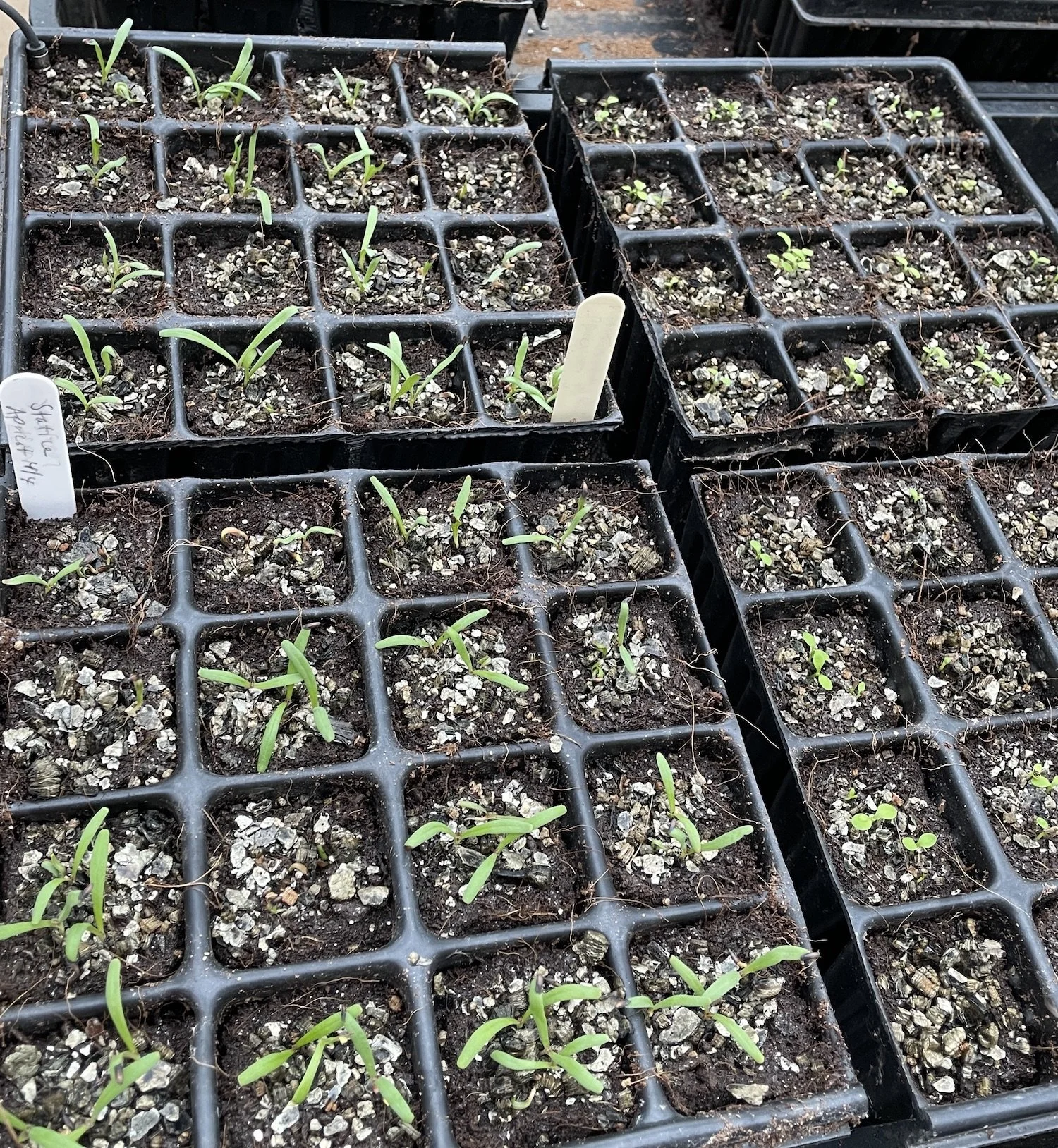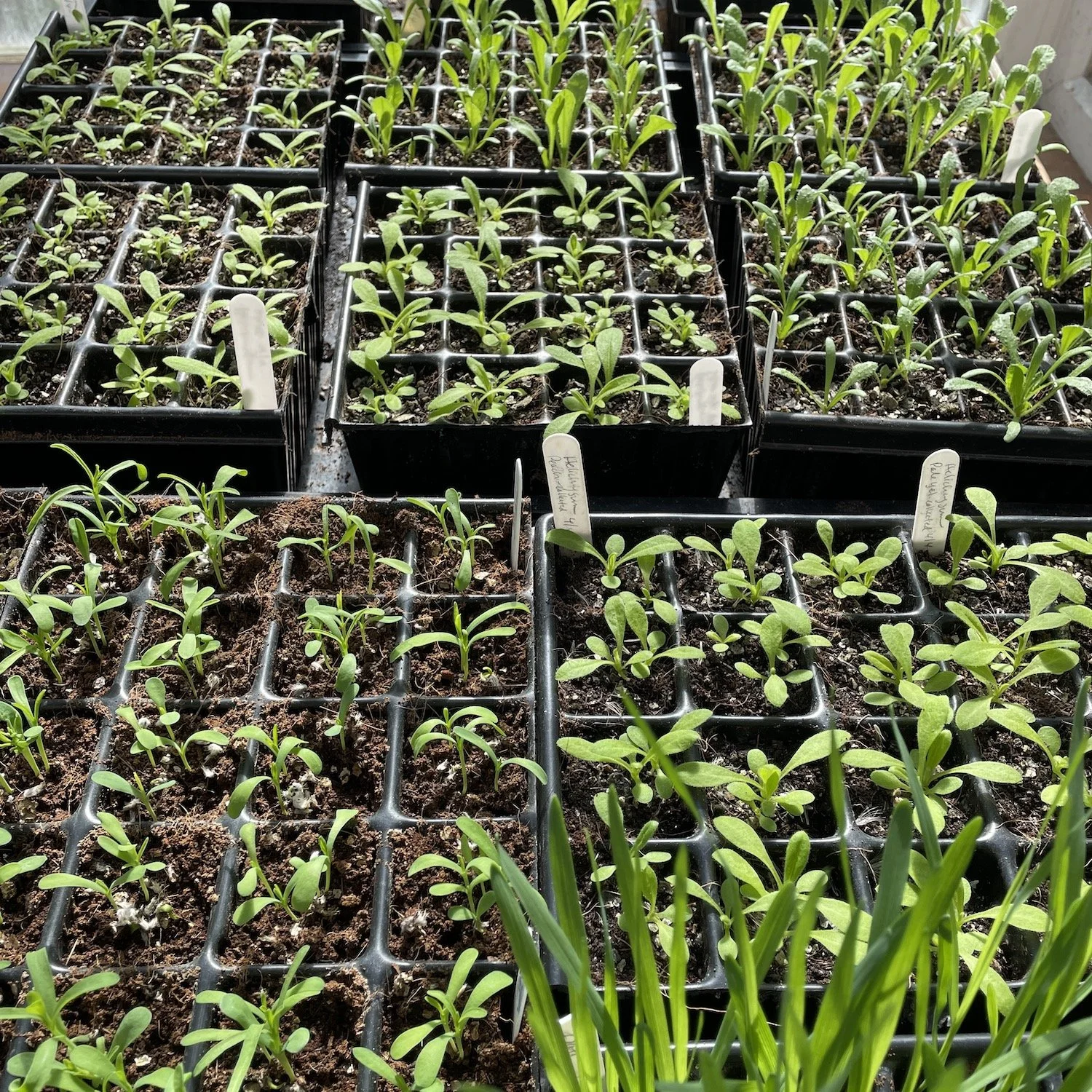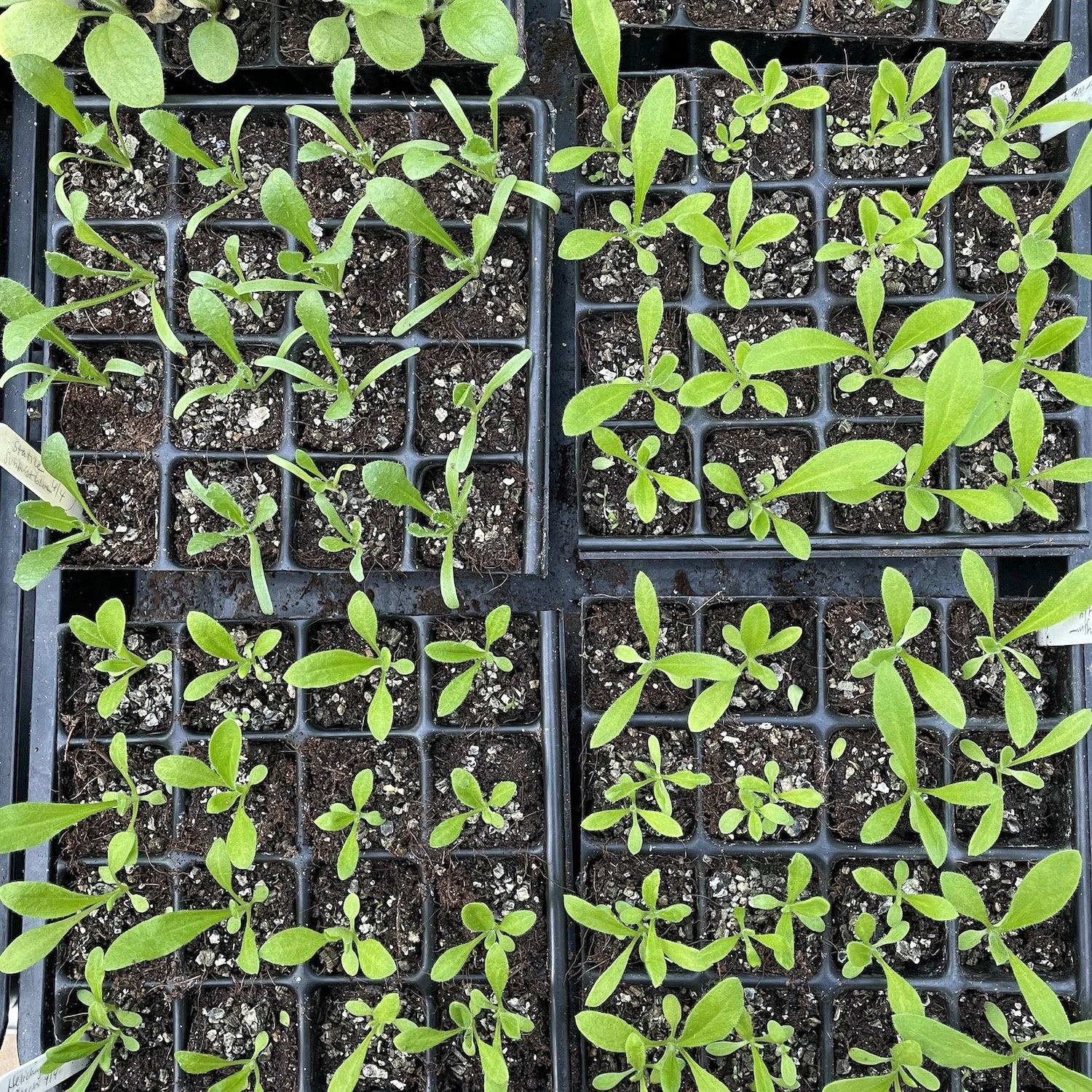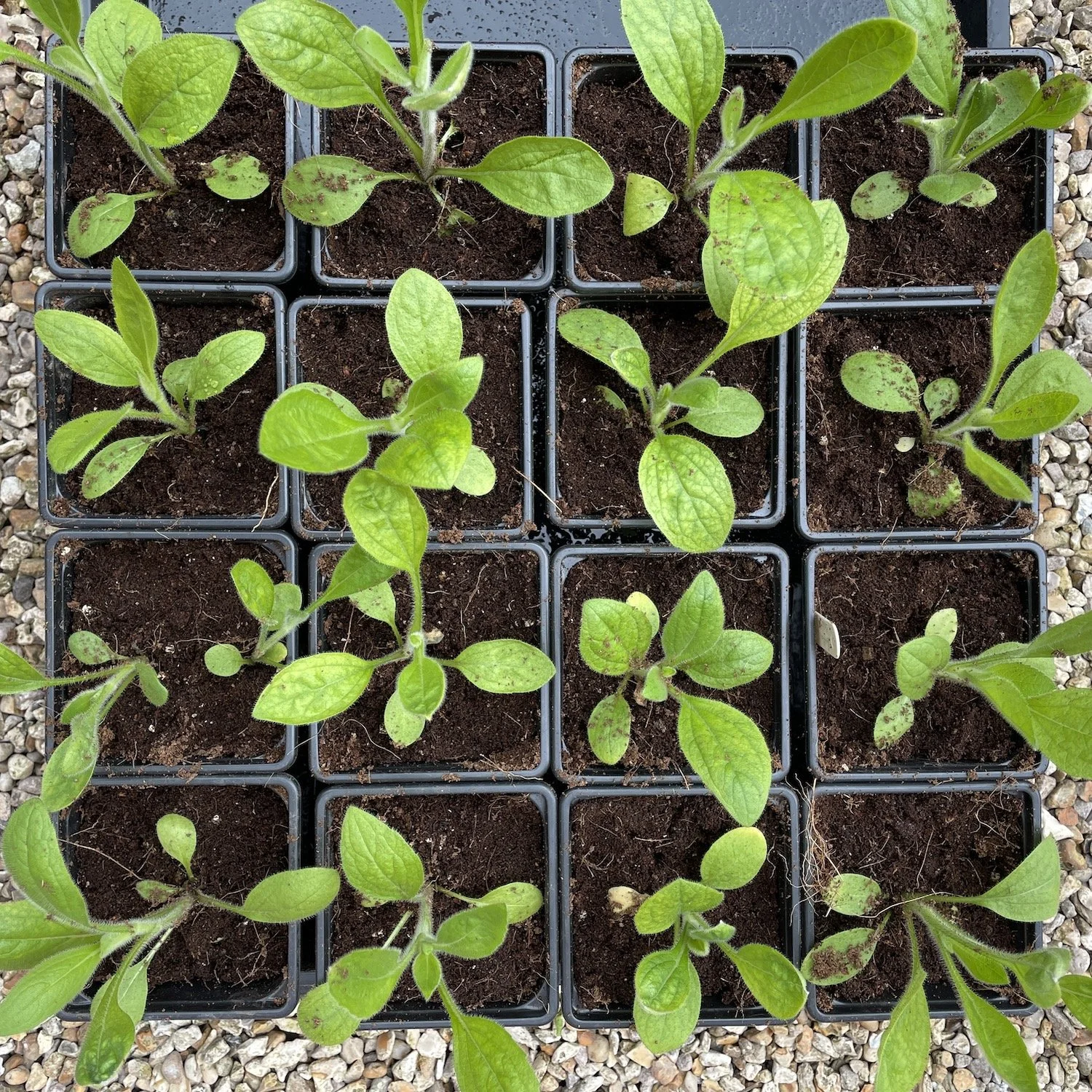Sowing seeds and why I stopped pricking out my seedlings
Some seeds are always better off started in modules or individual pots, like sweet peas, poppies and many vegetables, but we’re often advised to sow most flower seeds in seed trays and ‘prick out’ seedlings to transfer into separate modules or larger pots to grow on. I’ve struggled with seedling loss after pricking out and wanted to share what I’ve done to avoid this problem in case it’s helpful for anyone else.
The problem - seedling loss after pricking out
The first few years I grew flowers for sale - growing larger quantities of flowers than I ever had before - I used the pricking out method. This would mostly go ok, but I increasingly had seedling losses after transplant - particularly with Ammobium, Xeranthemum and zinnias - no matter how careful I was in handling the seedlings. The problem was that the small, delicate roots of the transplanted seedling had been disturbed and damaged by pricking out and were then sitting in damp compost in cool spring weather. As a result, many of them succumbed to root rot and perished, especially the plants that prefer warmer climates. I tried different composts but that made no difference (I now use Fertile Fibre plastic-free). I tried amending the compost to improve drainage (perlite, sand, vermiculite) and planted the seedlings to the side of the pot rather than in the centre (to promote drainage around the roots) which helped a little bit but I was still losing too many plants and the seedlings that did survive often grew into weak plants that didn’t flower well.
My solution - sowing directly into module trays
Last year I sowed some seeds directly into modules instead of seed trays - so they didn’t need pricking out - and these seedlings grew into healthy plugs with strong root systems that could be potted up with very little root disturbance. These plants had much better survival rates than the pricked-out ones. This year I decided to sow ALL of my seeds into module trays to avoid any need for pricking-out and possible root damage. I sowed as little as two up to a few seeds per module depending on the age and quantity of the seeds (for older seeds I sowed more, for fresh seeds or seeds that came very few to a packet, I sowed less). As the seeds grew, I carefully thinned them to just a few plants per module, finally thinning to one strong seedling per module (this way of sowing is the same as direct sowing in the garden where you over-sow and then thin your seedlings). I also watered from the bottom only, to ensure the compost structure wasn’t compressed in any way by overhead watering. Once the seedlings’ roots filled the modules, I transplanted them into 3-inch pots to grow on before planting out.
Pros and cons of sowing direct into modules
There are pros and cons to propagating seeds this way. For me, the pros outweigh the cons, especially when it comes to saving time - thinning plants takes me less time than the pricking-out process - and avoiding plant loss. One of the major downsides is that sowing into modules takes up a lot of space. I think most large-scale flower growers sow this way, as they have ample room for sowing under cover, but not everyone has endless lengths of windowsill, table or greenhouse bench. I use our sunny conservatory for sowing and until my seedlings get potted up and moved out to my greenhouse, there are trays taking up any available flat surface out there. If I had very limited space, I’d prioritise only my most sensitive plants for module sowing and improve drainage for the rest of the plants.
Pros
Reduced root disturbance and plant loss due to root rot
Takes less time because the fiddly pricking out step is eliminated
Saves adding amending compost to improve drainage for small root systems
Can use less compost depending on the number of times you pot up (no compost needed for an initial seed tray sowing)
Cons
Takes up more bench space
Potential for increased seed wastage - however, if you’re careful and seed quality is good, this should be kept to a minimum
Final thoughts
So far, this year’s results from module sowing have been a success and I’m planning to carry on using this sowing method in years to come. Lately I’ve also been wondering about using a bit of bottom heat to help the really sensitive plants (zinnia, Ammobium and Xeranthemum) after their module-grown seedlings are potted up as they can have problems at this point too when the weather is really cool, which it has been this spring. So I might give that a try if the weather doesn’t warm up.
How do you sow seeds indoors? Do you already sow into modules or do you enjoy the process of pricking out seedlings?





